An Interview with Silent Film Composer
Ekkehard Wölk
By Ehsan Khoshbakht
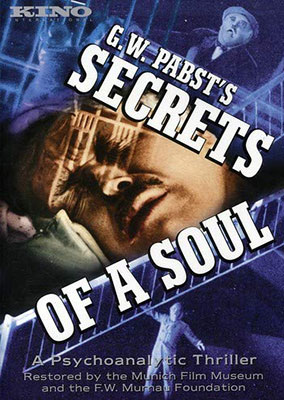 Ekkehard Wölk is a pianist, arranger and composer from Germany. As far as cinema concerned, he is a composer and accompanist for silent films. His style consists of a personal interpretation of classical music from the view of a jazz improviser. He has composed music scores for several films of the German silent cinema — most notably for F.W. Murnau films. Two of his works for German films have been released on DVD home video by Kino International: Secrets of a Soul (1926) directed by G.W. Pabst (released 2009), and The Finances of the Grand Duke (1924) directed by Murnau (released 2008), which was also broadcast in Europe by Arte Television in December 2008. Ekkehard Wölk is a pianist, arranger and composer from Germany. As far as cinema concerned, he is a composer and accompanist for silent films. His style consists of a personal interpretation of classical music from the view of a jazz improviser. He has composed music scores for several films of the German silent cinema — most notably for F.W. Murnau films. Two of his works for German films have been released on DVD home video by Kino International: Secrets of a Soul (1926) directed by G.W. Pabst (released 2009), and The Finances of the Grand Duke (1924) directed by Murnau (released 2008), which was also broadcast in Europe by Arte Television in December 2008.
Wölk was born on 14 June 1967 in Schleswig, Germany, and began his piano training at the age of seven in the classical tradition of Leschetitzky and his famous adepts Artur Schnabel and Edwin Fischer. Eventually, Wölk studied with emphasis on the major works of Bach, Beethoven, Brahms and Debussy. After graduating from high school, in 1987, he studied historical and systematic musicology at the University of Hamburg, and later studied at the Humboldt University in Berlin.
From 1988 Wölk studied classical piano at the conservatories in Hamburg and Lubeck, graduating in 1994 as a concert pianist and music pedagogue. Ekkehard wrote his first jazz compositions at the age of twenty-two, and at first, his primary jazz influence was Bill Evans, but he later also studied Bud Powell, McCoy Tyner, Thelonious Monk, Ahmad Jamal, Art Tatum, and specifically Fred Hersch who, many years later, became his master teacher in New York City.
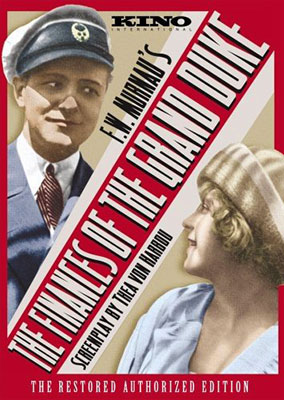 In 1995, Wölk moved to Berlin and worked as a composer and bandleader, developing creative projects mostly in the jazz field. He has worked as a jazz and classical teacher, as an arranger, and as a flexible accompanist for many jazz singers, as well as in the classical and musical show genres. He has also worked in live theatre as an accompanist, notably, for the Brecht Theatre Berliner Ensemble. In 1995, Wölk moved to Berlin and worked as a composer and bandleader, developing creative projects mostly in the jazz field. He has worked as a jazz and classical teacher, as an arranger, and as a flexible accompanist for many jazz singers, as well as in the classical and musical show genres. He has also worked in live theatre as an accompanist, notably, for the Brecht Theatre Berliner Ensemble.
Ekkehard Wölk has released five albums as a pianist and arranger in Germany and Italy: A Meeting of Two American Giants — Gershwin/Bernstein (JB Records, 2001); the trio album, Songs, Chorals and Dances (2005); a solo album, Reflections on Mozart (2006); Desire for Spring (Splasc(H) Records, 2007); and Homage to Nino Rota (2008) — (some of these albums are available at www.nabelrecords.de). He has performed with his trio for several live radio recordings, mostly original compositions under the title Pictures in Sounds, for well-known German broadcasting stations in Berlin and Munich. A June 2009 broadcast by the Wölk quartet was dedicated to the films of Alfred Hitchcock.
In 2005, Wölk was invited by the former director of the F.W. Murnau Foundation, Friedemann Beyer to compose and perform music scores for selected Murnau films. In addition to the two commercially-released titles from this period, Wölk composed music in 2007 for Murnau’s Faust (1926), a score that he considers his best work, which has not yet been released on DVD. Among the other films he has composed and performed live piano accompaniment for are Murnau’s Nosferatu (1922), The Last Laugh (1924) and Tartüff (1926), Fritz Lang’s The Woman in the Moon (1929), Robert Siodmak, Edgar G. Ulmer, Billy Wilder and Fred Zinnemann’s People on Sunday (1929), Ernst Lubitsch’s The Wildcat (1921), and also for some of the great American comedies by Buster Keaton, Charles Chaplin and Harold Lloyd. Khoshbakht: What is your conception of composing for or accompanying a silent picture? How do you fill the gap between a piece of art that has been made years ago and the second form of art that is trying to accompany, complete or add something new to the prior?
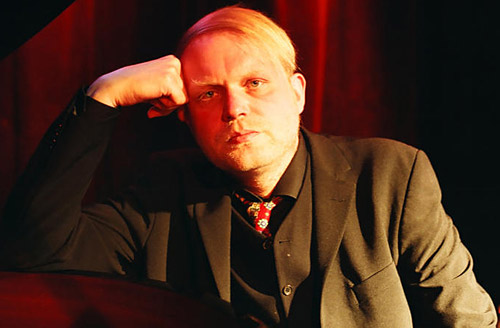 Wölk: My ideal vision for the projected effect of a composer’s soundtrack for silent movies would be a gain of an immediately emotionally approachable ‘presence’ of the old films in the perception of contemporary viewers when they are confronted with a newly restored version and new music in cinema or on TV. Wölk: My ideal vision for the projected effect of a composer’s soundtrack for silent movies would be a gain of an immediately emotionally approachable ‘presence’ of the old films in the perception of contemporary viewers when they are confronted with a newly restored version and new music in cinema or on TV.
I strongly believe that a good musical accompaniment can bridge the gap between many lost decades lying in-between by providing a kind of emotional guide through an ancient film which otherwise might not be easy to consume or maybe even totally unapproachable for many modern viewers.
The golden days of silent cinema in Europe and the United States (roughly dating from 1913-1929) are, to me, undoubtedly the greatest and artistically most satisfying period in cinema history, judging, primarily, by the surviving masterpieces (two-thirds of the whole output of films from that time have been allegedly lost and destroyed during the wars).
Unfortunately, cinema as an original art form had already reached its culmination as an artistic medium quite early after its invention (if we accept the first Lumières screening in Paris of December 1895 as the general start).
Valued from a purely aesthetic point of view and considering the idea of a certain innocence of the medium which was young in those days and produced startling technical and artistic innovations from Georges Méliès and Griffith on, one can certainly argue that even the arrival of sound film in the late 1920s and the subsequent development already meant a sort of ‘decline’ of the medium in terms of pictorial qualities and mastery of storytelling without dialogue.
Of course, there is no need for everybody to share my rather purist opinion, I concede, but modern audiences must be generally led to a different perception and a heightened evaluation of the great masterpieces of silent cinema which have come down to us some eighty years later.
Here, there is a challenging task but also a rewarding privilege for talented and devoted musicians and composers who share their skills collectively with the efforts of good restorators, archivists, journalists, owners of cinematheques and TV art channels — all for the sake of fresh and exciting new screenings of the old cinematic treasures that can still open many additional modern eyes to the artistic miracles of the early 20th century.
To give you an analogy from the wide field of arts: Though there has been a lot of interesting literature since that time, nobody can really seriously justify the idea that there have been any kind of ‘better’ books than those written, for example, by Gogol and Turgenjev around 1850 which still have readers all around the world today! There are only different approaches to the possible range and meaning of literature and its relationship to life nowadays delivered by books of modern authors.
Similarly, there have certainly not been any ‘better’ films since 1930 (unless exclusively judged by the increasing perfection of technical special effect standards) than those classics produced before by giants like Murnau, Stroheim, Dreyer, Eisenstein, etc.
Indeed, this is a wide field where more valid and convincing contributions by contemporary composers can help modern audiences, by the strength of their soundtracks, in getting to know these classics and their aesthetic values much more thoroughly!
Khoshbakht: What is the role of improvisation in your silent film scores?
Wölk: In live concerts, the amount of free improvisation is very high concerning my part as a pianist/interpreter/spontaneous arranger/ composer because I want to follow the action on screen as smoothly and varyingly as possible.
Usually, before a concert, I only select four or five central musical themes that will reappear throughout the whole show as leitmotifs, but the harmonic connections between these thematic blocks and actually most of the music dealing with the narrative development inherent in the film’s plot are spontaneously improvised while going along with the projected film.
But, while working on a compositional commission and/or preparing a studio recording for a DVD release or a television screening, the situation is entirely different for me. In this case, improvisation only plays a very minor part in the whole procedure. The arrangements and compositions for the film must be meticulously worked out in advance connected with the actual editing rhythm and dramaturgy of the various sequences and, first and foremost, their specific duration in minutes and seconds. This has all to be checked out very carefully by the composer while watching the film over and over again, sometimes even with the help of a stopwatch, to coordinate and structure the work on concrete themes and compositions.
For this reason, it is obvious that in this context the role of improvisation during a studio recording with a finished score at hands is reduced to invent a few bars here and there between change of sequences and for indication of mood and tempo changes with the help of subtle modulations.
Khoshbakht: Count Basie, who also was an accompanist for silent films, says a musician must follow action of the scene. It seems suitable for a silent western or a slapstick comedy, but you composed and performed for Murnau films that more than physical action are based on creating an atmosphere and psychology of characters.
Wölk: Of course, it is not always advisable just to ‘duplicate’ the action seen on screen through the music. This is, in fact, a very old technique from the early days of sound film called “Mickey Mousing” because they used it a lot in the first Disney cartoons, and later people like Max Steiner transferred this to full-length fiction films like King Kong (1933).
Sometimes it is better for the music to express something explicitly contrasting in atmosphere, mood and tempo to the actual scene — and its dialogue in sound film — turning a supposedly humorous scene into something melodramatic and vice versa, implying something for the spectators which the characters on screen do not know yet or are unable to acknowledge to themselves.
One famous example is the “Third Man Theme” for The Third Man (1949) played by Anton Karas on a Viennese zither, a haunting but still very charming melodic theme that on the surface seems to stand in open contrast to the film’s baroque black and white images of postwar Vienna in the late 1940s and the sinister appearance of Orson Welles/Harry Lime as the dark, fallen angel. But it becomes evident pretty soon that this joyful music even enhances the menacing film noir atmosphere of the movie in a powerful and emotionally resonating way!
Khoshbakht: You were deeply involved with German expressionist films. Is there any sign of German composers of that period in your works?
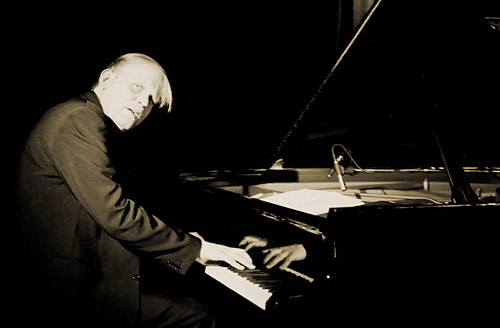 Wölk: Given the highly eclectical, hybrid nature of silent movie music in general, I find it very hard to trace back so-called hidden influences by other composers and their works from different genres. Considering the process of playing and/or composing for a silent movie, I would even go so far as to compare it to the ‘stream of consciousness’ concept used by Joyce and Alfred Döblin in literature. That means, every kind of musical material that has ever reached your ears and crossed your mind and your fingers, that you can faintly remember, can potentially find its way in a spontaneously improvised live performance, and also in a written score. Wölk: Given the highly eclectical, hybrid nature of silent movie music in general, I find it very hard to trace back so-called hidden influences by other composers and their works from different genres. Considering the process of playing and/or composing for a silent movie, I would even go so far as to compare it to the ‘stream of consciousness’ concept used by Joyce and Alfred Döblin in literature. That means, every kind of musical material that has ever reached your ears and crossed your mind and your fingers, that you can faintly remember, can potentially find its way in a spontaneously improvised live performance, and also in a written score.
In the 1920s, the original cinema pianists and the huge premiere theatre orchestras similarly used a wild mixture of genres and styles thrown together quite arbitrarily sometimes, I believe.
Basically, the only thing that should matter is the movie itself as an already finished piece of art, its general character of genre (comedy, tragedy, melodrama, historical costume period piece, etc.), its varying moods, the relevance of the central characters and their relations, conditions of social surroundings and historical periods invoked by the authors of the film. Out of all these parameters, the contemporary composer is forced to take out those that he thinks are essential for the meaning and the public appeal of the film. From there on he chooses his musical materials, decides which kind of motifs, textures and thematic developments he will use in his soundtrack.
Please allow me in this context to describe briefly two examples of my own efforts in this genre.
In the case of Friedrich Wilhelm Murnau’s light-hearted farce The Finances of the Grand Duke (1924) [available in a restored version on DVD with Wölk’s score, Divisa Home Video, Spain (2008) and Kino International, USA (2009)], the whole film is more-or-less done in the style of an extravagant and slightly crazy ‘silent operetta’, without singers and lyrics, of course, similar to the plots of certain well-known productions by Franz Lehar, Oscar Strauss and Emmerich Kalman. So, while I was putting music to this film, my choice of motifs and thematic ideas was pretty much determined by a wish to indicate musically the operetta tone of the movie in a subtle way — with echoes of these composers.
In contrast to that, my soundtrack for G.W. Pabst’s psychoanalytical exploration Secrets of a Soul (1926) [available in a restored version on DVD with Wölk’s score, Kino International, USA (2008)], tries — besides several other things — to capture a ‘fin de siècle’, Viennese bourgeois decadent feeling a little bit, in accordance with the Freudian subject matter and to fit the strange atmosphere of the film’s dreamlike, surrealist images. For this reason, there might be several hints at certain composers from that period of music around 1900, ranging from French impressionistic masters and Mahler song cycles to the Schönberg 1909 school of free atonality and clusters — but this only happens in the form of a rather ‘hidden’ musical echo and hardly discernible quotes.
Khoshbakht: How and when did you get involved in Murnau project(s)?
Wölk: Some years ago, I planned another small concert series of silent movie performances in Berlin in collaboration with a public viewing club. In preparation for attaining legal permission to show several German silent classics from the Weimar period, we needed to establish contact with the Friedrich Wilhelm Murnau Foundation in Wiesbaden, an internationally renowned institution that holds the rights to thousands of German films from the 1920s to the 1960s on, and which reconstructs, restores and redistributes a lot of their films on DVD nowadays. After some letters and phone calls, I finally got the chance to show certain DVDs from the stock of the Murnau Foundation in connection with my piano music in Berlin in the autumn of 2005.
In connection with this, the former director of the Murnau Foundation, Mr. Friedemann Beyer (who also published interesting cinephile books on Peter Lorre and Sybille Schmitz), told me that the foundation was looking for new composers/musicians to collaborate on several planned DVD productions of German silent films for the near future. So, that was the beginning of my work for the Friedrich Wilhelm Murnau Foundation in Wiesbaden. In the spring of 2006, I composed and recorded the music for the very rare Murnau comedy from 1924, The Finances of the Grand Duke, which came out on DVD in the autumn of 2008 and was subsequently shown on Arte Television at the end of December 2008.
Following this, I wrote several new soundtracks for a couple of German silent classics that were available from the stock of the Murnau Foundation. Some of these scores, unfortunately, have not been released on DVD for various reasons — for example, my quite elaborate music for Murnau’s famous Faust (1926) which I personally still consider to be my best work in this genre so far, or the accompaniment for Ernst Lubitsch’s hilarious farce The Wildcat (1921) featuring Pola Negri.
Khoshbakht: So far, your scoring work belongs to a certain period of German cinema. Do you think, in working on a score for an American film, we’ll hear a different Ekkehard Wölk? Do you think that your love and passion for jazz will have an immediate influence on a score for an American film? More swinging and less European?
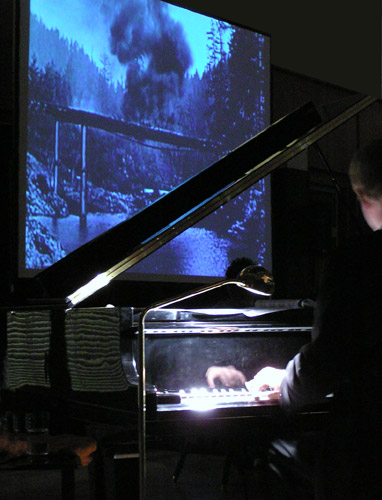 Wölk: To be accurate, I have done live piano concerts in Germany for several American silent classics for many years now — especially for the famous slapstick comedies by Chaplin, Keaton, Langdon and Lloyd. They are always very popular with audiences and also quite joyful to accompany. Wölk: To be accurate, I have done live piano concerts in Germany for several American silent classics for many years now — especially for the famous slapstick comedies by Chaplin, Keaton, Langdon and Lloyd. They are always very popular with audiences and also quite joyful to accompany.
Naturally, I play totally different musical material for these films than I do for German expressionist films, using much more ragtime and stride piano stuff from the ‘Roaring Twenties’! Sometimes, for example with Buster Keaton’s historical comedies like Our Hospitality (1923) and The General (1926), I also include a couple of old patriotic American folk songs as well as popular tunes by Stephen C. Foster from the mid-19th century.
Khoshbakht: But which one do you prefer for composing — a fast-paced Raoul Walshian type of silent film or the downbeat cinema of a director like Pabst?
Wölk: That totally depends on the concrete working situation: If you do a movie piano accompaniment in concert for a live audience, then it is quite often more spectacular and also more enthralling for the people to have a sort of entertaining action movie with a lot of fast tempo and rhythm changes. In connection with that, you need rapidly alternating musical textures to correspond to the editing and to the wildly developing narrative structure.
Here, I think of the breathtaking comedies by Harold Lloyd (Safety Last, 1923) and Buster Keaton (The General), which I have already interpreted with music in many live situations. There you have such an enormous, continuing succession of relentlessly forward-moving bravura events and gags that the musical challenge lies primarily in following the breathless actions as smoothly as possible — indeed, changing from very heavy fortissimo chord passages and dramatic glissandi, grotesquely overblown harmonical ‘turmoils’ to sudden moments of lyrical calmness and poetical beauty. In technical terms, this is also very hard to realize spontaneously for the pianist who tries to interpret the mercilessly unfolding action of the movie simultaneously!
But, when you are hired for working out a real film composition based on several elaborate leading segments (‘Leitmotiv’ a la Wagner) and when you finally record this in a professional studio with the chance to repeat passages all over again, I rather prefer a film with a more moderate basic rhythm where you have enough space in between to be able to develop and explore certain musical sequences in order of proper characterization of characters and situations.
In my soundtrack for G.W. Pabst’s Secrets of a Soul, first there were these famous ‘nightmare sequences’ filled with a lot of effects and surreal tricks. Definitely here there was a need for very dynamic and flexibly handled musical materials in a high, everchanging speed! On the other hand, when you watch the film, you will find out that most parts of the film, the ‘real-life’ portion and portrayal of the Werner Krauss character’s marriage problems and his development to paranoia and psychosis consist in slow-paced psychological sequences and long-held individual shots in the tradition of the Kammerspielfilm. For this reason, I chose more subtle and intimate musical segments for these portions and tried to leave some space for the viewer’s imagination. Having described this working experience on the Pabst film, I would say that here was a very satisfying balance of structure between the different parts and an ideal working-ground for me as the film composer to deal with.
Khoshbakht: Do you think of yourself more as a jazz or a classical musician?
Wölk: I am torn between two worlds, so to speak (this is also the title of one of my compositions from 2001!). As a classically-studied pianist and musicologist, I started and got increasingly familiar with the European musical tradition of Bach, Mozart, Beethoven, Brahms, etc. — examining their works harmonically and also on theoretical terms. But, from the mid-90s on, my always existing interest in improvised music and jazz became more and more dominant, especially for my pianistic activities after finishing my classical exam in 1994. Ten years ago, I got totally into the history and development of American jazz, and tried intensely to get more inspirations and insights into this art form from my various visits to New York.
Nowadays, however, my interests tend to go back strongly into the further investigation of European art music, especially considering composers like Mahler, Schönberg, Berg, Hindemith, Ligeti, that I have not known well enough before and which I find very stimulating at the moment. Considering the contemporary development of jazz music, I somehow feel that this has become a kind of too self-absorbed, academically spoiled field today, less interesting and somehow already finished — at least in the light of upcoming musical directions in the future.
Khoshbakht: You did an album based on Nino Rota’s themes; he must be one of your favorites. What do you find in Rota’s compositions that fit your conception of music, jazz, or a film score?
Wölk: There are several reasons for my profound admiration of Nino Rota’s film music compositions. First, he is an absolute master of instrumentation, of writing totally characteristic and identifiable sounds for strings, the reed players and the brass instruments! Then, there is his great gift for the invention of haunting melodies with poetical substance, like his most famous trumpet theme from La Strada (1954). But, the most distinct and remarkable trait of Rota’s film music seems to me to be the specific Mediterranean flavor of his music, its ‘Italian-ness’ which is universally recognizable as a trademark of Italian culture, like the 17th-century Commedia Dell’Arte.
You cannot think of Fellini’s films with their baroque, overfloating images without adding the musical impressions delivered by Nino Rota’s soundtracks. Indeed, this is a very rare example of a film composer whose artistic contribution to the success of a film and its lasting grip on cinema audiences is as decisive as the imprint of the director.
Khoshbakht: What is your opinion of modern compositions for old movies, for example the work that Phillip Glass did for Dracula (1931) – which I found rather boring – or silent films with a rock score or any kind of popular music?
Wölk: There have been a lot of very superficial attempts to ‘update’ old silent movies with the aid of so-called ‘contemporary’ sound design, live and on DVD, in the last few years — whether it has been a free jazz collective ensemble improvisation with no discernible connection to the pictures being projected on the screen, as a playground for musicians on an ego trip, or whether it might be a grunge or techno version of The Cabinet of Dr. Caligari (1920) or Battleship Potemkin (1925) for dance floor kids.
Personally, I feel that these arbitrary versions usually do not do any justice nor do they show any respect for the depth of silent cinema as an advanced form of art. Besides that, I happen to find most of these products also aesthetically unconvincing. Certainly it can be interesting to use electronic sounds and modern sound samplings as ingredients of a silent film score, but then it must be done in a really intelligent way — scrupulously planned in advance in close connection with the structure of the movie you are concretely dealing with.
As a matter of fact, I do not know the Philip Glass score you mentioned, but I remember, in the mid-1980s, having seen an appalling colored version of Fritz Lang’s Metropolis combined with Giorgio Moroder’s disco soundtrack and I thought, “Oh, how horrible that they dare doing this!” Nevertheless, I have read somewhere that even this bastard version, over the years, now has reached a certain cult status among certain video clip buffs. So, let it roll . . .
Khoshbakht: Duke Ellington did an excellent job of scoring for Anatomy of a Murder (1959) and Paris Blues (1961), so did Elmer Bernstein for The Man with the Golden Arm (1955), and, of course, John Lewis for Odds Against Tomorrow (1959) — no need to mention Miles Davis for Ascenseur pour l’échafaud (1958). What do you think about these jazz scores and using jazz in films in general?
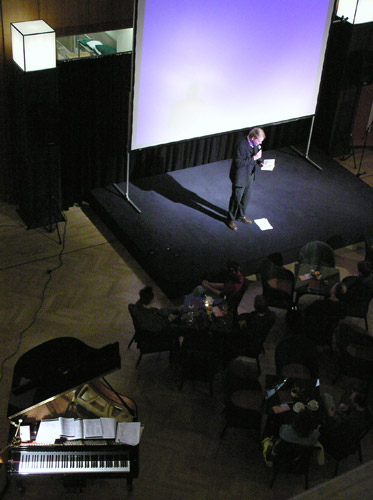 Wölk: All of these movies from the late 50s and early 60s use magnificent, jazzy soundtracks that perfectly catch the atmospheric essence of this existentialist period based on the aesthetics of black and white film noir, which also happened to be one of the most enriching decades in the development of jazz, with towering figures like Ellington, Monk, Lewis, Miles Davis, Coltrane reaching their creative peak. These cinema scores impressively counterpoint the images of existentialist despair and low-key criminality. Wölk: All of these movies from the late 50s and early 60s use magnificent, jazzy soundtracks that perfectly catch the atmospheric essence of this existentialist period based on the aesthetics of black and white film noir, which also happened to be one of the most enriching decades in the development of jazz, with towering figures like Ellington, Monk, Lewis, Miles Davis, Coltrane reaching their creative peak. These cinema scores impressively counterpoint the images of existentialist despair and low-key criminality.
In fact, in your listing, you missed one film which to me represents the most supposedly authentic depiction and vivid flair of New York jazz feeling at the end of the fifties: I am thinking of the directorial debut of independent director John Cassavetes called Shadows, released in 1959 with a spare musical soundtrack arranged by the bassist Charles Mingus. Though it is not exactly a story about jazz but more one about human relationships and their shortcomings — also about implicit racism in everyday life — it is one of the most unforgettable examples of jazz as a movie soundtrack. The idea is to hear the lonely alto sax played solo by Jackie McLean while we watch the rainy nocturnal Manhattan sidewalks in grainy black and white, shot with a shaky, hand-held camera in an openly unprofessional, non-Hollywood, ‘cinema-verite’ manner.
Because, nowadays, jazz music has mostly lost its poignancy and appeal to younger generations and is not the sound of a post-war ‘lost generation’ anymore, I would not use jazz as the only musical source for a contemporary full-length motion picture — just a few spots of instrumentation, maybe, of a muted trumpet or trombone in certain places where there is a plausible dramaturgic context for it.
Khoshbakht: Do you have any ideas about performing a silent film score with a combo?
Wölk: Yes, my favorite combination on would be an ensemble including clarinet, bass clarinet, flute, violin and cello combined with the sound of a piano trio (bass and drums).
This might be especially suitable for an intimate German Kammerspielfilm from the 1920s like those by directors like Pick, Grüne and Pabst, with a rather slow editing rhythm, and a heavy and dark pictorial quality.
Actually, with some of the recently restored versions of German and Soviet silent films being broadcast in the recent four years on Arte, you can sometimes hear instrumental ensemble sounds like this. But, as usual, working on a larger instrumentation also means getting a larger budget provided by a film company or a television network that are interested in giving a real commission for composition on a silent movie classic, and these things regrettably do not happen every day! Ehsan Khoshbakht is a film historian and critic from Iran. In recent years, one of his his main interests has been music for silent films, and he has written articles about the subject for the Iranian film journal, Film Monthly. He blogs on cinema at notesoncinematograph.blogspot.com and on jazz at ehsankhoshbakht.blogspot.com.
|




































